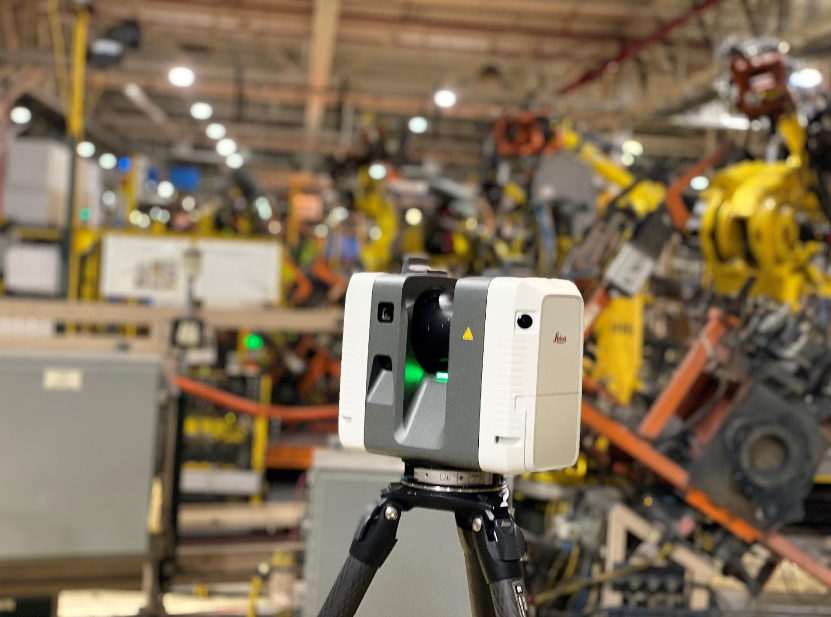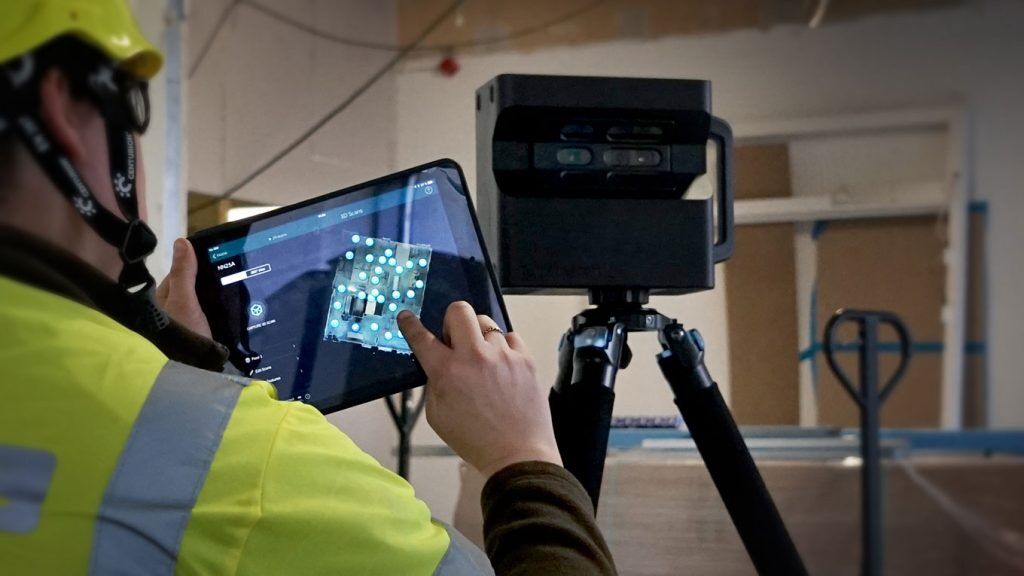Most Common Mistakes to Avoid When Using 3D Scanning
Enhancing Production Processes: The Influence of 3D Laser Scanning on Quality Assurance
3D laser scanning modern technology is changing quality assurance in production. By supplying exact measurements and high-resolution data, it enables makers to determine discrepancies from requirements easily. This innovation not just enhances assessment procedures yet additionally boosts operational performance. 3D Scanning. The application of this innovation comes with its own collection of difficulties. Exploring these facets reveals the broader effects for markets and the future landscape of manufacturing

Understanding 3D Laser Scanning Innovation
3D laser scanning modern technology has developed significantly in recent years, its essential concept stays uncomplicated: recording the accurate geometry of items utilizing laser beam of lights. This modern technology uses laser light to measure distances between the scanner and various points on a things's surface area. The information collected is after that refined to develop a thorough 3D version, properly mirroring the measurements and shapes of the checked item.
Normally, 3D laser scanners can be classified into two main kinds: call and non-contact scanners. Call scanners physically touch the object to collect dimensions, whereas non-contact scanners utilize laser beam of lights to capture data from a range. The adaptability of this innovation enables its application across different industries, consisting of production, building, and design. Its capability to generate high-resolution versions promotes quality assurance, reverse engineering, and fast prototyping, ultimately boosting style accuracy and performance in production procedures.
Benefits of 3D Laser Scanning in Manufacturing
As manufacturers look for to enhance performance and precision in their processes, the advantages of 3D laser scanning have come to be progressively evident. This ingenious technology enables for rapid and extremely precise dimensions of intricate geometries, significantly lowering the time needed for quality checks. By catching detailed information, suppliers can recognize inconsistencies early in the manufacturing process, consequently decreasing waste and rework expenses.
Additionally, 3D laser scanning facilitates much better layout validation, allowing designers to contrast as-built problems with initial specifications. This capability ensures that any kind of discrepancies are immediately addressed, enhancing overall product high quality. Additionally, the modern technology supports the development of electronic doubles, which can be made use of for simulations and procedure optimizations. Consequently, producers not only enhance their operational effectiveness but likewise improve their competitive advantage on the market. Generally, the combination of 3D laser scanning stands for a transformative action towards accomplishing greater standards in manufacturing quality control.
Integration of 3D Laser Scanning Into Quality Control
Incorporating 3D laser scanning right into quality assurance procedures boosts the precision and performance of evaluations throughout manufacturing. This technology makes it possible for suppliers to record thorough, high-resolution information of assemblies and components, allowing for precise dimensions and contrasts against style specifications. By employing 3D laser scanning, companies can determine discrepancies from resistances better, which is crucial for preserving product honesty.

Real-World Applications and Instance Research Studies
Real-world applications of 3D laser scanning in producing demonstrate its transformative effect across various industries. For circumstances, aerospace business use this technology to conduct precise inspections of components, guaranteeing they satisfy strict security standards. A remarkable case included a leading airplane manufacturer that utilized 3D laser scanning to streamline its quality assurance procedures, considerably reducing examination times and errors.
In the automobile field, makers have implemented laser scanning to produce electronic twins of their lorries, enabling real-time adjustments during manufacturing. One automotive firm reported a 30% decrease in rework expenses after incorporating this innovation right into their production line.
In the consumer items industry, firms are making use of 3D laser scanning for rapid prototyping, enabling for quicker models and enhanced item layouts. These applications illustrate just how 3D laser scanning not just improves precision but likewise improves performance and development throughout multiple manufacturing domain names.
Overcoming Challenges in Application
Implementing 3D laser scanning in manufacturing presents a number of obstacles that organizations should browse to totally understand its benefits. One considerable obstacle is the preliminary price of equipment and software application, which can prevent companies from adopting this innovation. In addition, incorporating 3D laser scanning right into existing workflows requires getting rid of resistance to transform amongst staff members, necessitating complete training programs to assure effectiveness. Information monitoring additionally poses a challenge, as the high volume of information generated by 3D scanning should be efficiently processed and evaluated to obtain actionable insights. Compatibility problems with tradition systems may hinder seamless assimilation, requiring possible upgrades or alterations. Attending to these difficulties is necessary for makers aiming to enhance quality control and maximize manufacturing processes. By developing clear approaches for training, investment, and data management, business can reduce these challenges and launch the transformative potential of 3D laser scanning in their operations.
Future Patterns in 3D Laser Scanning for Manufacturing
As making remains to develop, the integration of 3D laser scanning with increased automation is anticipated to transform manufacturing procedures. Enhanced data analytics will play an essential function in optimizing operations and enhancing quality assurance. These patterns highlight the potential for higher efficiency and precision in making environments.

Enhanced Automation Combination
The combination of automation in production has actually been progressive, the future of 3D laser scanning is positioned to increase this pattern significantly. As making procedures come to be increasingly complicated, the demand for accurate, real-time measurements grows. 3D laser scanning technology provides automated data capture, reducing labor costs and lessening human error. This integration permits manufacturers to improve quality control procedures, allowing quick discovery of discrepancies in production. Additionally, the alignment of 3D laser scanning with robotics and automated systems helps with seamless operations, enhancing general efficiency. As manufacturers take on these innovative innovations, they can expect enhanced precision and performance, positioning themselves competitively in a quickly progressing market. The harmony in between automation and 3D laser scanning marks a over here considerable leap onward in manufacturing development.
Enhanced Information Analytics
The assimilation of automation has led the way for improvements in information analytics within the domain of 3D laser scanning. Manufacturers are significantly leveraging sophisticated formulas and artificial intelligence methods to examine large datasets produced by laser scans. This improved information analytics ability permits for real-time monitoring of making processes, making it possible for look these up the identification of defects and inconsistencies better than traditional techniques. Predictive analytics can anticipate potential problems, significantly lowering downtime and improving total efficiency. The capacity to visualize data in 3 measurements provides deeper understandings right into manufacturing operations, fostering much better decision-making. As 3D laser scanning innovation remains to develop, the duty of data analytics will certainly end up being significantly critical in driving advancement and keeping affordable benefit in manufacturing.
Frequently Asked Questions
What Industries Advantage the Many From 3D Laser Scanning?
The sectors that profit most from 3D laser scanning consist of manufacturing, building, aerospace, automobile, and health care. These industries utilize the technology for precision dimensions, top quality guarantee, and effective style procedures, significantly improving overall functional effectiveness.
Exactly How Does 3D Laser Scanning Compare to Traditional Dimension Techniques?
3D laser scanning provides higher precision and rate contrasted to conventional measurement approaches. It catches comprehensive geometries swiftly, decreasing human error and promoting much better analysis, which inevitably improves overall quality assurance in various industries.
What Is the Price of Carrying Out 3D Laser Scanning Technology?
The price of carrying out 3D laser scanning innovation differs significantly, generally varying from $10,000 to $100,000, depending upon equipment, training, and software program. Organizations should consider these costs versus potential effectiveness and quality enhancements.
Exist Particular Software Program Requirements for 3D Laser Scanning?
Yes, 3D laser scanning needs details software application, consisting of information processing and modeling applications. Typical selections encompass CAD software program, factor cloud processing tools, and specialized applications that promote the integration and analysis of checked information for perfect outcomes.
The length of time Does a Normal 3D Laser Scanning Refine Take?
A typical 3D laser scanning process can take anywhere from a few mins to numerous hours, relying on factors like the size of the item, intricacy of the environment, and required level of information for precision.
3D laser scanning modern technology is transforming quality control in manufacturing. 3D laser scanning innovation has actually advanced substantially in current years, its fundamental principle remains straightforward: catching the accurate geometry of items view it now utilizing laser beam of lights. Incorporating 3D laser scanning right into high quality control procedures improves the precision and effectiveness of assessments throughout production (3D Scanning). 3D laser scanning modern technology supplies automated information capture, lowering labor prices and decreasing human mistake. The price of applying 3D laser scanning technology varies significantly, commonly varying from $10,000 to $100,000, depending on software, tools, and training